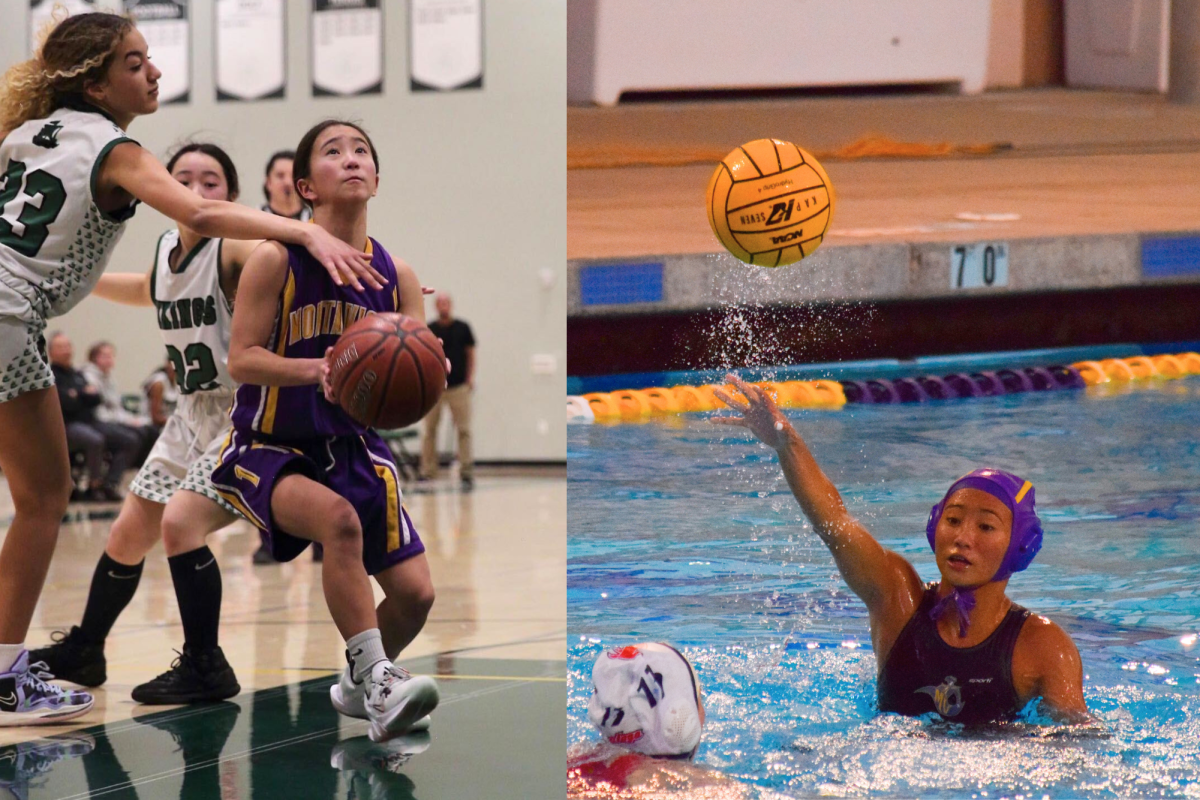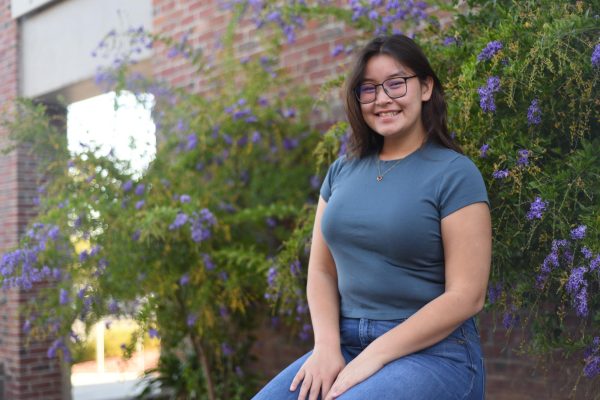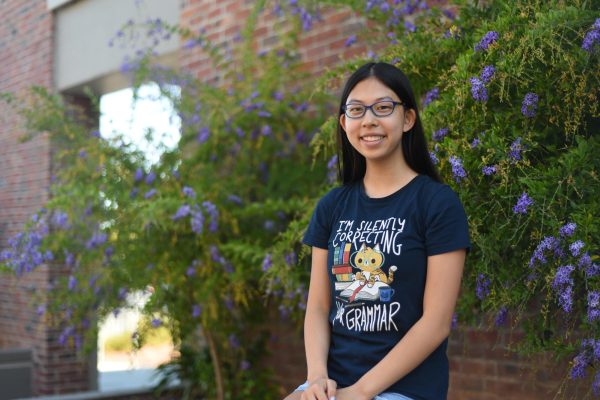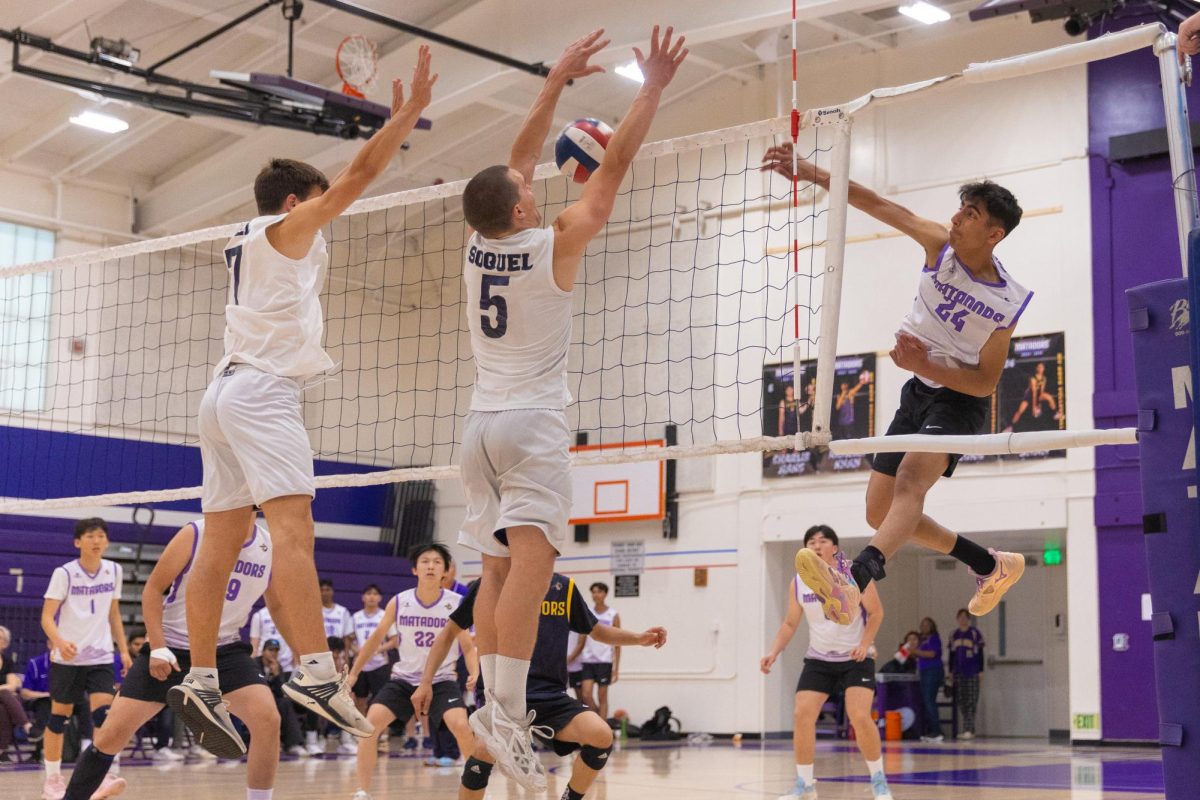Freshman Allie Rummelhoff’s rookie basketball season ended with a bang two weeks after the season had originally been expected to end. She was grateful for the extra time with her close-knit team, a result of a successful playoff series and a CCS championship win. Yet with extra time spent on the basketball court, she missed the first two weeks of track and field season, which was already well underway.
“As a freshman coming in, everyone in their events had already met, so it was kind of scary because I didn’t know anyone at first,” Rummelhoff said. “Switching from a very intense environment at basketball to a laid-back environment at track was weird.”
Rummelhoff was used to receiving a consistent stream of encouragement with basketball, which made the shift to the track and field team jarring, as she felt more reliant on herself to grow. While she values the opportunity to grow on an individual level, she believes that the closeness of the basketball team gave her an environment where she could thrive.
“The environment was definitely beneficial because when we all had really hard practices and suffered as a team, we gained a connection, so we all had the same mindset at that point,” Rummelhoff said. “If basketball was a laid-back environment, I would not have gone as far as I did.”
Sophomore Miya Sakurai has had similar bonding experiences within both her time on the water polo and basketball team, where she believes her teammates and the connections she’s built with them allowed her to better embrace the intensity of both sports.
“When there’s a strong team bond, everyone gets along with each other and there’s just good mutual energy everywhere, so everyone can play their best,” Sakurai said. “It’s a lot easier to do better when everyone’s nicer and gets along better.”
Sakurai says the intensity of a sport is often dependent on the type of sport, as well as a player’s dedication. For example, she feels team sports like basketball and water polo are more physically intense, while individual sports like swimming are more mentally intense. Paraeducator and football coach Caesar Agront adds that coaches can be an important factor in building a culture of intensity for their players.
“No matter what, in wrestling, in football, in softball, you have to be intense,” Agront said. “It’s our job as coaches to get the kids to be within that zone, and if they’re in that zone, they’re going to have success.”
Agront also acknowledges his experiences of coaching football, wrestling and softball at MVHS have led him to understand that different sports require different styles of coaching, as coaches must direct an athlete’s innate intensity towards what would best serve the sport. For example, football players must emphasize physical intensity and overcoming the fear and mental block of injury, while situational awareness is critical to wrestling.
“My approach is not going to be to tell athletes what to do,” Agront said. “It’s giving them the tools to enhance what they have. I feel like being able to be adjustable and have empathy for the players gives a coach a lot of resources and a framework that can create an atmosphere where all athletes can have success.”
Similarly to Agront, Rummelhoff believes adaptability between mindsets, as well as team environments, is important while playing different sports. Additionally, she acknowledges that intensity needs to be balanced. She notes how in track and field, which is often seen as a low-commitment sport, many students only attended practices two or three times a week, rather than the four or five days that practices were held, and feels the season ended just as many of them were improving and understanding the sport. On the other hand, due to the high intensity and large time commitment of her basketball practices, she often felt like there wasn’t enough time to rest between the morning practices and evening games, like in other sports.
“There are some points where in basketball I felt so sick after practice, I wasn’t doing anything else,” Rummelhoff said. “Especially towards the end, we would have morning practices, and then we would go home and go straight to a game. I felt like it was just so intense on your body.”
Sakurai reiterates that physical intensity can be overwhelming. Still, she believes that doing multiple sports can give her more opportunities to find what works best for her.
“Everyone is usually bigger than me in water polo, so it’s kind of harder for me,” Sakurai said. “But in basketball, there’s different positions, so I feel like I can manage that better.”
Ultimately, Rummelhoff says playing a wider variety of sports has allowed her to develop her mindset in ways that can be translated across different situations. She feels that learning individual motivations and creating team connections will serve to improve her as an athlete holistically.
“You’re learning two different mindsets and you’re gonna have to use those mindsets in different situations,” Rummelholf said. “On the court, on the track, if you’re not doing good or your teammates are not doing good and you want to push them. You’re gonna learn from both of them and you’re always going to be able to use them in both sports, which definitely helps.”












